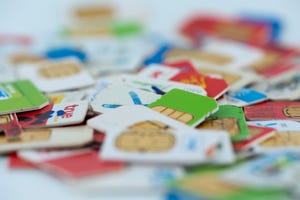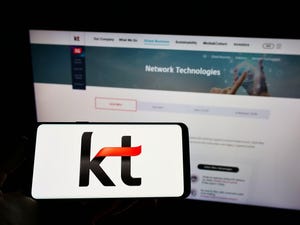Apple Boosts the Enterprise Cloud
Improvements to messaging, voice recognition and customer privacy were on the menu for enterprise cloud at Apple's big developers' conference this week.

Apple's big springtime software announcement this week contained a few nuggets for enterprises looking to implement cloud technologies for business. These include enhancements to messaging, voice recognition and an intriguing technology to collect customer big data while also preserving privacy.
At its annual WorldWide Developers Conference Monday, Apple laid out a panoply of upgrades to its operating systems for the iPhone, iPad, Mac, Apple Watch and Apple TV. Most of the upgrades were for consumers, but Apple distributed some nuggets that could prove valuable for enterprises using the cloud for business. (See Apple WWDC News: Twitter Brings the Funny and WWDC: 5 Top Updates for Apple's tvOS.)
Apple lays out details for developers here, but there are still plenty of questions on just how broadly useful the new technologies will be to enterprises. Expect more answers to surface between now and when the new software ships in the autumn.
Message extensions
Start with messaging. Third-party developers, including enterprises, will be able to write app extensions that integrate with the Messages app. It's primarily designed to send text, stickers, media files and interactive messages. The big question: Will developers be able to use the APIs to create chatbots that reduce dependence on apps? Consumers looking to buy flowers, order movie tickets, call up a car service or buy plane tickets would be able to interact with a software bot through Messages, rather than having to download an app or go to a site on the mobile web.
That's the direction Facebook is taking with its Messenger app, which competes with Messages. Chatbots are already wildly popular for doing business in China, and it seems likely they would catch on here, particularly among consumers who don't want to fuss with downloading and installing an app for what might be a one-time transaction. (See Facebook to Announce Messenger 'Chatbots' for Business – Report.)
Apple Pay
Apple Pay gets enhanced to allow users to make secure payments over the web and through interactions with Siri and Maps. Says Apple: "When you support Apple Pay in your website, users browsing with Safari [on the iPhone, iPad, or Mac] can make payments using their cards in Apple Pay on their iPhone or Apple Watch." That should help reduce shopping cart abandonments for retail sites and -- again -- reduce the need for consumers to install apps to do business.
Want to know more about the cloud? Visit Light Reading Enterprise Cloud.
Siri
Siri is coming to the Mac, and getting enhancements to allow Apple's voice assistant to control third-party apps. Until now, users could only use Siri to control Apple's own Apps. For example, a user could ask Siri for directions in Apple Maps but not Google Maps. Now, Apple is broadening Siri support for third-party apps -- but only a limited subset, specifically audio and video calling, messaging, sending or receiving payments, searching photos, booking a ride and managing workouts.
So you're in luck if you're an enterprise in the fitness or transportation industry, or you want to let your employees use Siri to initiate calls on the company universal communications system. But most enterprise apps will have to wait for Siri support.
Universal communications
And speaking of universal communications -- VoIP apps will now get priority treatment alongside Apple's own Phone app. VoIP will get access to the phone's UI, viewing and answering incoming VoIP calls on the lock screen, managing contacts and more. That's great news for enterprises that have installed unified comms systems, whose users previously had to install and juggle apps to make and receive calls.
Next page: Fast lane for mission-critical apps
Cisco Systems Inc. (Nasdaq: CSCO), which announced a partnership with Apple on collaboration applications last year, provided an update on that alliance this week. Cisco says it's optimized its wireless networking for iPhones and iPads. Cisco has also created a "fast lane" for business critical apps. "No longer will you have to ask your coworker to lay off the cat videos while you're on a Cisco WebEx or Spark Call on your iOS device; your IT department can now effortlessly prioritize the apps most critical to your business, helping you get the job done from your mobile device," says the spiel. And it's optimizing Cisco Spark to take advantage of the new VoiP integration with the iPhone's native phone app. (See Apple & Cisco Plot an Enterprise Fast Lane.)
Apple also has partnerships with SAP and IBM. (See Apple, SAP Partner on Mobile Cloud Apps and IBM, Apple Tie-Up Moving Into Cloud.)
Differential privacy
The next cloud announcement is applicable to every enterprise that is looking to track customer analytics while also protecting privacy. It's also just plain cool.
Apple faces a quandary: It wants to customize its services to suit individual customer needs, and make proactive suggestions based on what it thinks users will want. On the other hand, unlike competitors Google (Nasdaq: GOOG) and Facebook , Apple wants to do this without collecting customer data. Impossible, right?
Apple thinks it has gone a long way to solving this problem using a technique called "differential privacy," and plans to apply that toward improving QuickType and emoji suggestions, Spotlight deep link suggestions, and Notes.
Apple didn't say much about how that's going to work, but Matthew Greene, a cryptographer at John Hopkins University, describes how differential privacy works, and it's both simple and clever: You inject a controlled amount of random information -- noise -- into a database of customer information, then correct for that noise when extracting information. Voilà -- you've managed to collect information about groups while obfuscating information about any particular individual.
Another wrinkle on differential privacy uses "randomized response." Greene points to a Wikipedia explanation -- the short version is when asking individuals for information, you randomize some of the responses. You know how many responses you randomized, so you can correct for that factor in determining results.
Wikipedia uses the example of asking men whether they've visited prostitutes. The men are instructed to flip a coin, and answer "yes" if the coin comes up tails, regardless of whether they've actually visited a prostitute. The men are instructed to answer truthfully if the coin comes up heads. The researcher knows that half the responses are nonsense, and can correct the aggregate data without needing to know which half of the responses are bogus.
Other Apple announcements had to do with overall enhancements to the iPhone and Mac's productivity and security, such as making improvements to the way messages are displayed on the iOS lockscreen, eliminating the swipe-to-unlock gesture on newer iPhones in favor of TouchID, providing the ability to unlock the Mac from an Apple Watch, sharing clipboards between iOS and Mac devices and more. Also: there are New Message stickers and animations to pass the time with colleagues during boring meetings!
If you want to catch up with the announcements and don't want to sit through the official two-hour keynote video, here it is condensed to seven minutes:
About the Author(s)
You May Also Like












